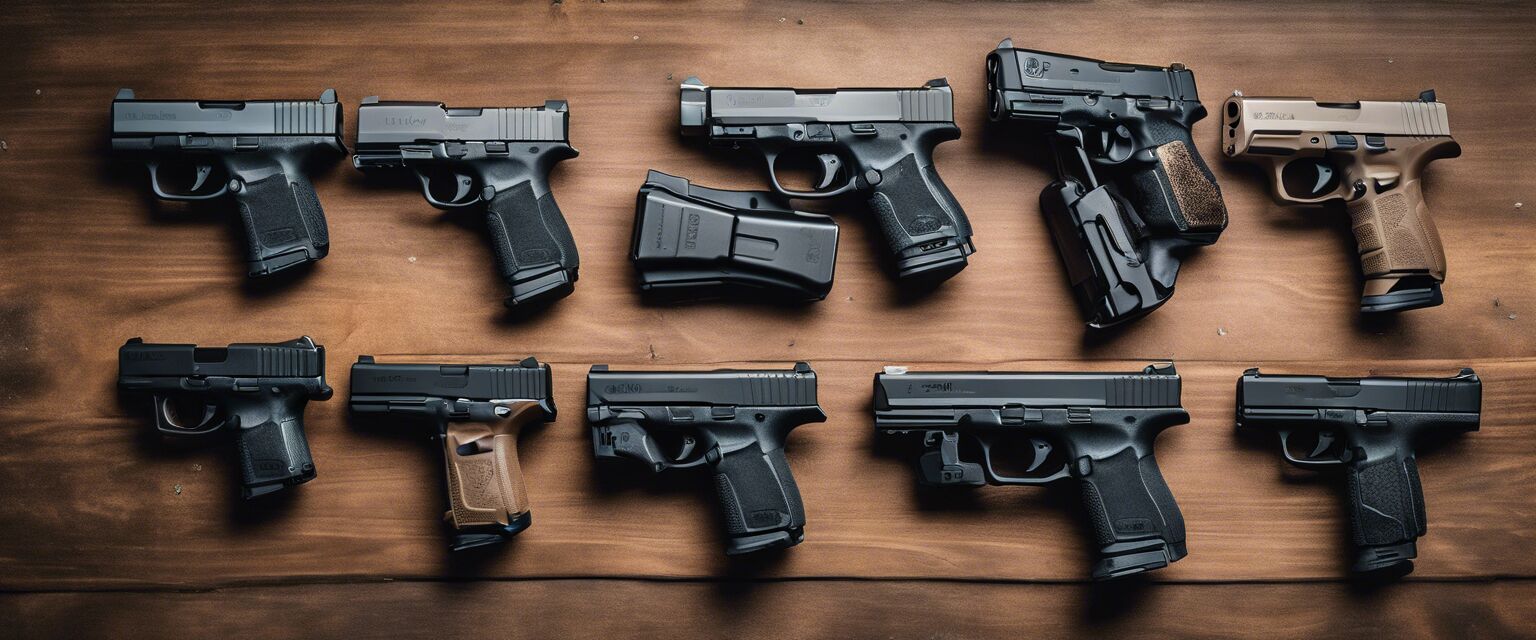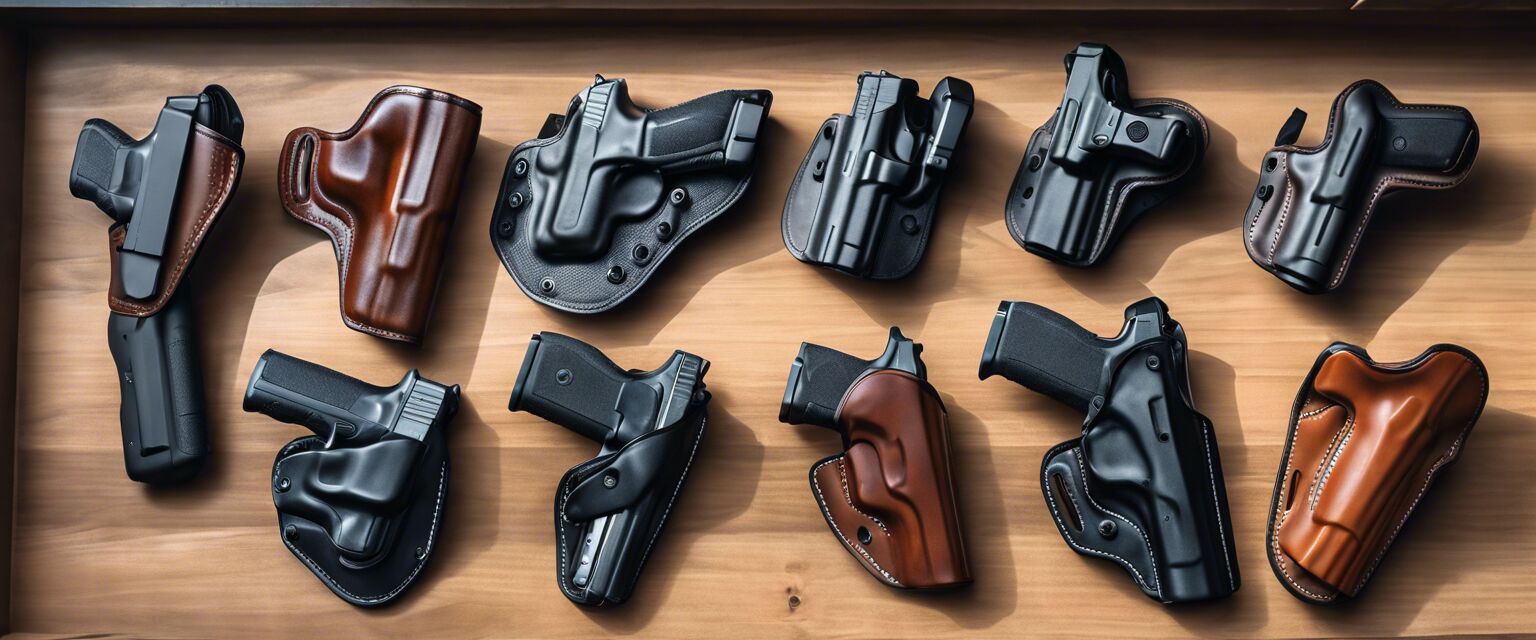
Shoulder Holsters
Key Takeaways
- Shoulder holsters provide comfort and accessibility for concealed carry.
- They are ideal for larger firearms and provide even weight distribution.
- Choosing the right material and fit is crucial for effective concealment.
- Proper adjustment and positioning can enhance usability and safety.
- Consider various designs to match your lifestyle and clothing preferences.
When it comes to concealed carry methods, shoulder holsters offer unique benefits that make them a popular choice among firearm enthusiasts. This article will explore everything you need to know about shoulder holsters, including their advantages, types, materials, and tips for choosing the right one for your needs.
What is a shoulder holster?
A shoulder holster is a type of holster that is worn on the upper body, typically under the arms. This design allows for the firearm to be concealed beneath a jacket or other outer clothing, making it an excellent option for those looking to carry a firearm discreetly.
Benefits of shoulder holsters
- Comfort: The weight of the firearm is distributed evenly across the shoulders.
- Accessibility: Firearms can be drawn quickly and easily from a seated position.
- Versatility: They can be worn with different types of clothing.
- Concealment: They allow for effective concealment of larger firearms.
Types of shoulder holsters
| Type | Description |
|---|---|
| Horizontal Shoulder Holsters | These holsters hold the firearm horizontally across the chest. |
| Vertical Shoulder Holsters | Firearms are positioned vertically, making for easier access when drawing. |
| Crossdraw Shoulder Holsters | These allow for the firearm to be drawn with the opposite hand, enhancing accessibility. |
Materials used in shoulder holsters
The materials used in shoulder holsters can greatly affect comfort, durability, and concealment. Here are some common materials:
- Leather: Offers a classic look and durability but requires maintenance.
- Polymer: Lightweight and easy to clean, suitable for everyday use.
- Neoprene: Provides comfort and flexibility, ideal for all-day wear.
Choosing the right shoulder holster
Selecting the right shoulder holster involves several considerations, including your firearm type, body shape, and personal preferences. Here are some tips:
Tips for Beginners
- Test different styles and fits to find what works best for you.
- Ensure the holster allows for a smooth draw while being secure.
- Consider adjustable straps for a customizable fit.
- Look for holsters with padding for increased comfort.
How to adjust and wear a shoulder holster
Proper adjustment is essential for comfort and accessibility. Follow these steps to ensure your shoulder holster is worn correctly:
- Put on the holster and adjust the shoulder straps for comfort.
- Position the firearm close to your body for effective concealment.
- Adjust the holster's angle to allow for a smooth draw.
- Check that the holster is secure and does not shift during movement.

Common misconceptions about shoulder holsters
There are several myths surrounding shoulder holsters that can deter people from trying them. Here are a few:
- Too bulky: Many modern shoulder holsters are designed to be low-profile.
- Only for larger firearms: They can accommodate a variety of handgun sizes.
- Uncomfortable: With the right fit and material, they can be very comfortable.
Care and maintenance of shoulder holsters
Maintaining your shoulder holster is important to ensure its longevity and functionality. Here are some care tips:
- Regularly clean the holster according to the material (leather, polymer, etc.).
- Store in a cool, dry place to prevent damage or warping.
- Inspect straps and clasps for wear and tear regularly.
Conclusion
Shoulder holsters are a practical and comfortable choice for concealed carry. By understanding their benefits, types, and proper usage, you can find the ideal shoulder holster that meets your needs. Always prioritize comfort, accessibility, and concealment when making your choice.
Pros
- Comfortable for all-day wear
- Allows for quick access and easy draw
- Even weight distribution reduces fatigue
- Versatile for different clothing styles
Cons
- Can be cumbersome under tight clothing
- May require specific clothing styles for concealment
- Potential for printing, depending on design
Related Products
Explore our different categories of holsters to find the right fit for your concealed carry needs:
- Ankle Holsters
- Appendix Carry Holsters
- Inside the Waistband (IWB) Holsters
- Outside the Waistband (OWB) Holsters
- Pocket Holsters









